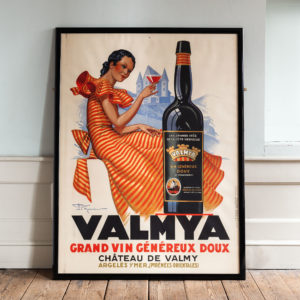76 items found
Page 1 of 1
-
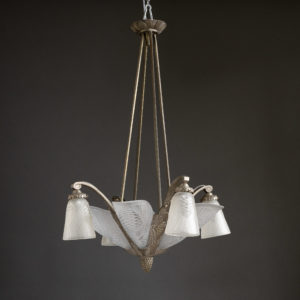
French Art Deco chandelier by Degué
£3,250French Art Deco chandelier by Degué
nickel plated brass with moulded and frosted glass shades, with light fitments to the body as well as each of the four arms.£3,250 -

The Dance, by Henri Matisse, Jan – March 1939 / No. 4.
£1,200The Dance, by Henri Matisse, Jan – March 1939 / No. 4.
The Verve Review was a purposefully luxurious. It ran from 1937 to 1960, but with only 38 editions available, due to the high degree of design and editorial work dedicated to each issue. Each edition contained unique lithographic prints, commissioned by the editor, and each cover a double-page lithograph elaborated by one of the artists contained within. It was the brainchild of its editor Stratis Eleftheriades, a Greek National who moved to Paris in the early thirties to take part in the growing Modernist movement, writing under the name of Teriade.£1,200 -
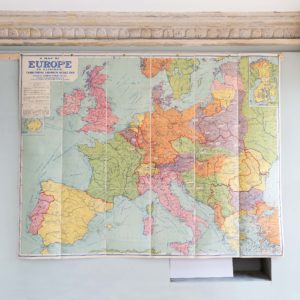
Philips’ A Map of Europe To Illustrate The Territorial Changes Since 1914
£1,200Philips’ A Map of Europe To Illustrate The Territorial Changes Since 1914
The Royal Geographical Society was founded in 1830 as an institution to promote the 'advancement of geographical science'.£1,200 -
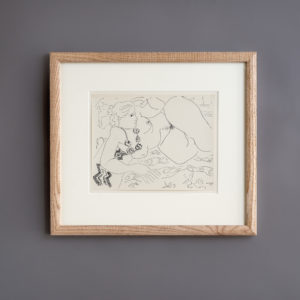
Cahiers D’Art, Dessins de Matisse
£300 eachCahiers D’Art, Dessins de Matisse
Cahiers d'Art is a French artistic and literary journal originally founded in 1926 by Christian Zervos, a Greek philosopher, editor. Born in 1889 in Argostoli on the Greek island of Cephalonia he was brought up in Alexandria, Egypt, finally moving to Paris in 1922. In 1924 Zervos joined the publishing firm Editions Morancé writing art articles for the magazine L'Art d'aujourd '. As an editor, he met many of the artists about whom the magazine wrote: Henri Matisse, Georges Braque, Ferdinand Léger, and Pablo Picasso. He left Morancé in 1926 to found his own journal Cahiers d'art becoming simultaneously publisher, director, model maker, chief editor and main editor. Each issue balanced primitive arts with the modern and contemporary arts and articles by art critics with more literary and poetic texts. According to Zervos, the interest in prehistoric, ancient and extra-European arts was necessary to get a glimpse of contemporary art. It was Zervos who took on the enormous task of documenting all the works of Pablo Picasso into a33-volume catalogue raisonnée, published between 1932 and 1978. One of his deepest wishes was to build up with Cahiers d’Art the visual archives of the artists he considered important. Zervos married Yvonne Marion who ran an art gallery, Galerie du Dragon, next to the location of her husband's shop, the rue Dragon on the left bank of Paris. Madame Zervos became an integral part of her husband's accomplishment and assembling their art collection. Initially published from 1926 to 1960 Cahiers d'Art still exists today after Swedish collector Staffan Ahrenberg purchased the publication and relaunched it in October 2012.£300 each -
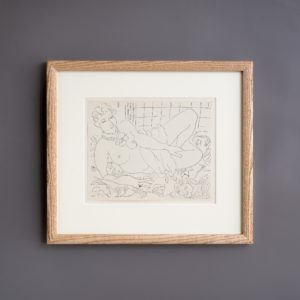
Cahiers D’Art, Dessins de Matisse
£300 eachCahiers D’Art, Dessins de Matisse
Cahiers d'Art is a French artistic and literary journal originally founded in 1926 by Christian Zervos, a Greek philosopher, editor. Born in 1889 in Argostoli on the Greek island of Cephalonia he was brought up in Alexandria, Egypt, finally moving to Paris in 1922. In 1924 Zervos joined the publishing firm Editions Morancé writing art articles for the magazine L'Art d'aujourd '. As an editor, he met many of the artists about whom the magazine wrote: Henri Matisse, Georges Braque, Ferdinand Léger, and Pablo Picasso. He left Morancé in 1926 to found his own journal Cahiers d'art becoming simultaneously publisher, director, model maker, chief editor and main editor. Each issue balanced primitive arts with the modern and contemporary arts and articles by art critics with more literary and poetic texts. According to Zervos, the interest in prehistoric, ancient and extra-European arts was necessary to get a glimpse of contemporary art. It was Zervos who took on the enormous task of documenting all the works of Pablo Picasso into a33-volume catalogue raisonnée, published between 1932 and 1978. One of his deepest wishes was to build up with Cahiers d’Art the visual archives of the artists he considered important. Zervos married Yvonne Marion who ran an art gallery, Galerie du Dragon, next to the location of her husband's shop, the rue Dragon on the left bank of Paris. Madame Zervos became an integral part of her husband's accomplishment and assembling their art collection. Initially published from 1926 to 1960 Cahiers d'Art still exists today after Swedish collector Staffan Ahrenberg purchased the publication and relaunched it in October 2012.£300 each -
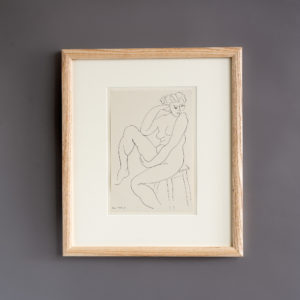
Cahiers D’Art, Dessins de Matisse
£300 eachCahiers D’Art, Dessins de Matisse
Cahiers d'Art is a French artistic and literary journal originally founded in 1926 by Christian Zervos, a Greek philosopher, editor. Born in 1889 in Argostoli on the Greek island of Cephalonia he was brought up in Alexandria, Egypt, finally moving to Paris in 1922. In 1924 Zervos joined the publishing firm Editions Morancé writing art articles for the magazine L'Art d'aujourd '. As an editor, he met many of the artists about whom the magazine wrote: Henri Matisse, Georges Braque, Ferdinand Léger, and Pablo Picasso. He left Morancé in 1926 to found his own journal Cahiers d'art becoming simultaneously publisher, director, model maker, chief editor and main editor. Each issue balanced primitive arts with the modern and contemporary arts and articles by art critics with more literary and poetic texts. According to Zervos, the interest in prehistoric, ancient and extra-European arts was necessary to get a glimpse of contemporary art. It was Zervos who took on the enormous task of documenting all the works of Pablo Picasso into a33-volume catalogue raisonnée, published between 1932 and 1978. One of his deepest wishes was to build up with Cahiers d’Art the visual archives of the artists he considered important. Zervos married Yvonne Marion who ran an art gallery, Galerie du Dragon, next to the location of her husband's shop, the rue Dragon on the left bank of Paris. Madame Zervos became an integral part of her husband's accomplishment and assembling their art collection. Initially published from 1926 to 1960 Cahiers d'Art still exists today after Swedish collector Staffan Ahrenberg purchased the publication and relaunched it in October 2012.£300 each -
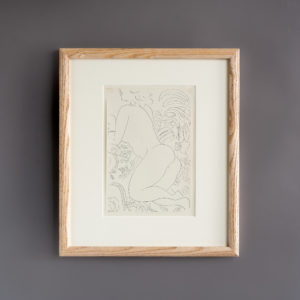
Cahiers D’Art, Dessins de Matisse
£300 eachCahiers D’Art, Dessins de Matisse
Cahiers d'Art is a French artistic and literary journal originally founded in 1926 by Christian Zervos, a Greek philosopher, editor. Born in 1889 in Argostoli on the Greek island of Cephalonia he was brought up in Alexandria, Egypt, finally moving to Paris in 1922. In 1924 Zervos joined the publishing firm Editions Morancé writing art articles for the magazine L'Art d'aujourd '. As an editor, he met many of the artists about whom the magazine wrote: Henri Matisse, Georges Braque, Ferdinand Léger, and Pablo Picasso. He left Morancé in 1926 to found his own journal Cahiers d'art becoming simultaneously publisher, director, model maker, chief editor and main editor. Each issue balanced primitive arts with the modern and contemporary arts and articles by art critics with more literary and poetic texts. According to Zervos, the interest in prehistoric, ancient and extra-European arts was necessary to get a glimpse of contemporary art. It was Zervos who took on the enormous task of documenting all the works of Pablo Picasso into a33-volume catalogue raisonnée, published between 1932 and 1978. One of his deepest wishes was to build up with Cahiers d’Art the visual archives of the artists he considered important. Zervos married Yvonne Marion who ran an art gallery, Galerie du Dragon, next to the location of her husband's shop, the rue Dragon on the left bank of Paris. Madame Zervos became an integral part of her husband's accomplishment and assembling their art collection. Initially published from 1926 to 1960 Cahiers d'Art still exists today after Swedish collector Staffan Ahrenberg purchased the publication and relaunched it in October 2012.£300 each -
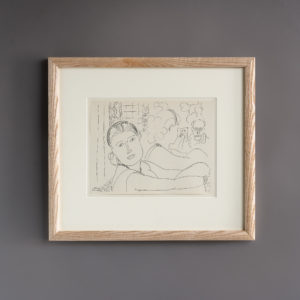
Cahiers D’Art, Dessins de Matisse
£300 eachCahiers D’Art, Dessins de Matisse
Cahiers d'Art is a French artistic and literary journal originally founded in 1926 by Christian Zervos, a Greek philosopher, editor. Born in 1889 in Argostoli on the Greek island of Cephalonia he was brought up in Alexandria, Egypt, finally moving to Paris in 1922. In 1924 Zervos joined the publishing firm Editions Morancé writing art articles for the magazine L'Art d'aujourd '. As an editor, he met many of the artists about whom the magazine wrote: Henri Matisse, Georges Braque, Ferdinand Léger, and Pablo Picasso. He left Morancé in 1926 to found his own journal Cahiers d'art becoming simultaneously publisher, director, model maker, chief editor and main editor. Each issue balanced primitive arts with the modern and contemporary arts and articles by art critics with more literary and poetic texts. According to Zervos, the interest in prehistoric, ancient and extra-European arts was necessary to get a glimpse of contemporary art. It was Zervos who took on the enormous task of documenting all the works of Pablo Picasso into a33-volume catalogue raisonnée, published between 1932 and 1978. One of his deepest wishes was to build up with Cahiers d’Art the visual archives of the artists he considered important. Zervos married Yvonne Marion who ran an art gallery, Galerie du Dragon, next to the location of her husband's shop, the rue Dragon on the left bank of Paris. Madame Zervos became an integral part of her husband's accomplishment and assembling their art collection. Initially published from 1926 to 1960 Cahiers d'Art still exists today after Swedish collector Staffan Ahrenberg purchased the publication and relaunched it in October 2012.£300 each -
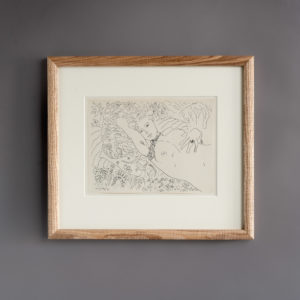
Cahiers D’Art, Dessins de Matisse
£300 eachCahiers D’Art, Dessins de Matisse
Cahiers d'Art is a French artistic and literary journal originally founded in 1926 by Christian Zervos, a Greek philosopher, editor. Born in 1889 in Argostoli on the Greek island of Cephalonia he was brought up in Alexandria, Egypt, finally moving to Paris in 1922. In 1924 Zervos joined the publishing firm Editions Morancé writing art articles for the magazine L'Art d'aujourd '. As an editor, he met many of the artists about whom the magazine wrote: Henri Matisse, Georges Braque, Ferdinand Léger, and Pablo Picasso. He left Morancé in 1926 to found his own journal Cahiers d'art becoming simultaneously publisher, director, model maker, chief editor and main editor. Each issue balanced primitive arts with the modern and contemporary arts and articles by art critics with more literary and poetic texts. According to Zervos, the interest in prehistoric, ancient and extra-European arts was necessary to get a glimpse of contemporary art. It was Zervos who took on the enormous task of documenting all the works of Pablo Picasso into a33-volume catalogue raisonnée, published between 1932 and 1978. One of his deepest wishes was to build up with Cahiers d’Art the visual archives of the artists he considered important. Zervos married Yvonne Marion who ran an art gallery, Galerie du Dragon, next to the location of her husband's shop, the rue Dragon on the left bank of Paris. Madame Zervos became an integral part of her husband's accomplishment and assembling their art collection. Initially published from 1926 to 1960 Cahiers d'Art still exists today after Swedish collector Staffan Ahrenberg purchased the publication and relaunched it in October 2012.£300 each -
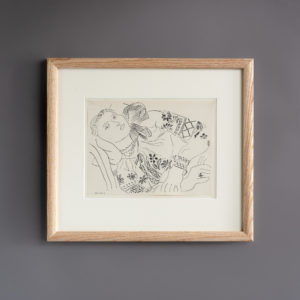
Cahiers D’Art, Dessins de Matisse
£300 eachCahiers D’Art, Dessins de Matisse
Cahiers d'Art is a French artistic and literary journal originally founded in 1926 by Christian Zervos, a Greek philosopher, editor. Born in 1889 in Argostoli on the Greek island of Cephalonia he was brought up in Alexandria, Egypt, finally moving to Paris in 1922. In 1924 Zervos joined the publishing firm Editions Morancé writing art articles for the magazine L'Art d'aujourd '. As an editor, he met many of the artists about whom the magazine wrote: Henri Matisse, Georges Braque, Ferdinand Léger, and Pablo Picasso. He left Morancé in 1926 to found his own journal Cahiers d'art becoming simultaneously publisher, director, model maker, chief editor and main editor. Each issue balanced primitive arts with the modern and contemporary arts and articles by art critics with more literary and poetic texts. According to Zervos, the interest in prehistoric, ancient and extra-European arts was necessary to get a glimpse of contemporary art. It was Zervos who took on the enormous task of documenting all the works of Pablo Picasso into a33-volume catalogue raisonnée, published between 1932 and 1978. One of his deepest wishes was to build up with Cahiers d’Art the visual archives of the artists he considered important. Zervos married Yvonne Marion who ran an art gallery, Galerie du Dragon, next to the location of her husband's shop, the rue Dragon on the left bank of Paris. Madame Zervos became an integral part of her husband's accomplishment and assembling their art collection. Initially published from 1926 to 1960 Cahiers d'Art still exists today after Swedish collector Staffan Ahrenberg purchased the publication and relaunched it in October 2012.£300 each -
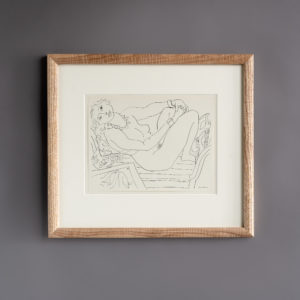
Cahiers D’Art, Dessins de Matisse
£300 eachCahiers D’Art, Dessins de Matisse
Cahiers d'Art is a French artistic and literary journal originally founded in 1926 by Christian Zervos, a Greek philosopher, editor. Born in 1889 in Argostoli on the Greek island of Cephalonia he was brought up in Alexandria, Egypt, finally moving to Paris in 1922. In 1924 Zervos joined the publishing firm Editions Morancé writing art articles for the magazine L'Art d'aujourd '. As an editor, he met many of the artists about whom the magazine wrote: Henri Matisse, Georges Braque, Ferdinand Léger, and Pablo Picasso. He left Morancé in 1926 to found his own journal Cahiers d'art becoming simultaneously publisher, director, model maker, chief editor and main editor. Each issue balanced primitive arts with the modern and contemporary arts and articles by art critics with more literary and poetic texts. According to Zervos, the interest in prehistoric, ancient and extra-European arts was necessary to get a glimpse of contemporary art. It was Zervos who took on the enormous task of documenting all the works of Pablo Picasso into a33-volume catalogue raisonnée, published between 1932 and 1978. One of his deepest wishes was to build up with Cahiers d’Art the visual archives of the artists he considered important. Zervos married Yvonne Marion who ran an art gallery, Galerie du Dragon, next to the location of her husband's shop, the rue Dragon on the left bank of Paris. Madame Zervos became an integral part of her husband's accomplishment and assembling their art collection. Initially published from 1926 to 1960 Cahiers d'Art still exists today after Swedish collector Staffan Ahrenberg purchased the publication and relaunched it in October 2012.£300 each -
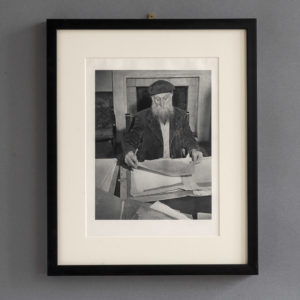
Photographs from Verve, December 1937. Portrait of Aristide Maillol
£250 eachPhotographs from Verve, December 1937. Portrait of Aristide Maillol
The Verve Review, from its very inception, was a purposefully luxurious art publication. It ran from 1937 to 1960, but for only 38 editions, due to the high degree of design and editorial work dedicated to each issue. Its editor was Stratis Eleftheriades, a Greek National who moved to Paris in the early thirties to take part in the growing Modernist movement, writing under the name of Teriade. As an art critic, patron and gallery owner he commissioned various individuals, artists, photographers and philosophers to contribute to it. Héliogravure is a process for printing photographs that was developed in the first half of the 19th century. It is a photo-mechanical process whereby a copper plate is grained and then coated with a light-sensitive gelatin tissue which had been exposed to a film positive, and then etched, resulting in a high-quality intaglio plate that can reproduce detailed continuous tones of a photograph.£250 each -
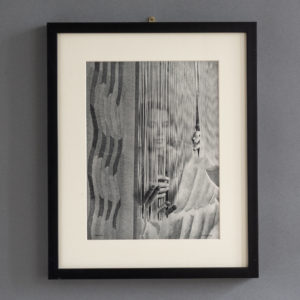
Photographs from Verve, December 1937. Gobelins / Makowska
£250 eachPhotographs from Verve, December 1937. Gobelins / Makowska
The Verve Review, from its very inception, was a purposefully luxurious art publication. It ran from 1937 to 1960, but for only 38 editions, due to the high degree of design and editorial work dedicated to each issue. Its editor was Stratis Eleftheriades, a Greek National who moved to Paris in the early thirties to take part in the growing Modernist movement, writing under the name of Teriade. As an art critic, patron and gallery owner he commissioned various individuals, artists, photographers and philosophers to contribute to it. Héliogravure is a process for printing photographs that was developed in the first half of the 19th century. It is a photo-mechanical process whereby a copper plate is grained and then coated with a light-sensitive gelatin tissue which had been exposed to a film positive, and then etched, resulting in a high-quality intaglio plate that can reproduce detailed continuous tones of a photograph.£250 each -
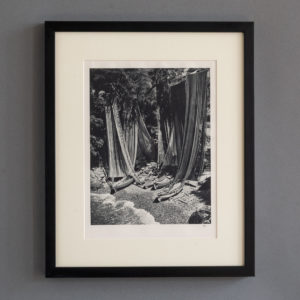
Photographs from Verve, December 1937. Gil
£250 eachPhotographs from Verve, December 1937. Gil
The Verve Review, from its very inception, was a purposefully luxurious art publication. It ran from 1937 to 1960, but for only 38 editions, due to the high degree of design and editorial work dedicated to each issue. Its editor was Stratis Eleftheriades, a Greek National who moved to Paris in the early thirties to take part in the growing Modernist movement, writing under the name of Teriade. As an art critic, patron and gallery owner he commissioned various individuals, artists, photographers and philosophers to contribute to it. Héliogravure is a process for printing photographs that was developed in the first half of the 19th century. It is a photo-mechanical process whereby a copper plate is grained and then coated with a light-sensitive gelatin tissue which had been exposed to a film positive, and then etched, resulting in a high-quality intaglio plate that can reproduce detailed continuous tones of a photograph.£250 each -
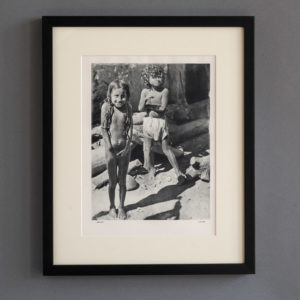
Photographs from Verve, December 1937. Henri Cartier-Bresson
£250 eachPhotographs from Verve, December 1937. Henri Cartier-Bresson
The Verve Review, from its very inception, was a purposefully luxurious art publication. It ran from 1937 to 1960, but for only 38 editions, due to the high degree of design and editorial work dedicated to each issue. Its editor was Stratis Eleftheriades, a Greek National who moved to Paris in the early thirties to take part in the growing Modernist movement, writing under the name of Teriade. As an art critic, patron and gallery owner he commissioned various individuals, artists, photographers and philosophers to contribute to it. Héliogravure is a process for printing photographs that was developed in the first half of the 19th century. It is a photo-mechanical process whereby a copper plate is grained and then coated with a light-sensitive gelatin tissue which had been exposed to a film positive, and then etched, resulting in a high-quality intaglio plate that can reproduce detailed continuous tones of a photograph.£250 each -

Photographs from Verve, December 1937. Man Ray
£250 eachPhotographs from Verve, December 1937. Man Ray
The Verve Review, from its very inception, was a purposefully luxurious art publication. It ran from 1937 to 1960, but for only 38 editions, due to the high degree of design and editorial work dedicated to each issue. Its editor was Stratis Eleftheriades, a Greek National who moved to Paris in the early thirties to take part in the growing Modernist movement, writing under the name of Teriade. As an art critic, patron and gallery owner he commissioned various individuals, artists, photographers and philosophers to contribute to it. Héliogravure is a process for printing photographs that was developed in the first half of the 19th century. It is a photo-mechanical process whereby a copper plate is grained and then coated with a light-sensitive gelatin tissue which had been exposed to a film positive, and then etched, resulting in a high-quality intaglio plate that can reproduce detailed continuous tones of a photograph.£250 each -
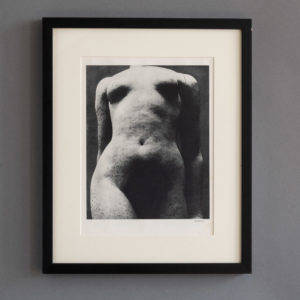
Photographs from Verve, December 1937. Erwin Blumenfeld
£250 eachPhotographs from Verve, December 1937. Erwin Blumenfeld
The Verve Review, from its very inception, was a purposefully luxurious art publication. It ran from 1937 to 1960, but for only 38 editions, due to the high degree of design and editorial work dedicated to each issue. Its editor was Stratis Eleftheriades, a Greek National who moved to Paris in the early thirties to take part in the growing Modernist movement, writing under the name of Teriade. As an art critic, patron and gallery owner he commissioned various individuals, artists, photographers and philosophers to contribute to it. Héliogravure is a process for printing photographs that was developed in the first half of the 19th century. It is a photo-mechanical process whereby a copper plate is grained and then coated with a light-sensitive gelatin tissue which had been exposed to a film positive, and then etched, resulting in a high-quality intaglio plate that can reproduce detailed continuous tones of a photograph.£250 each -
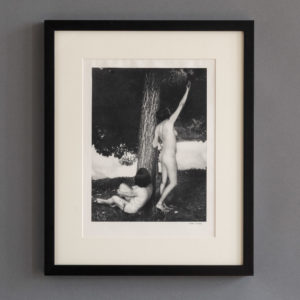
Photographs from Verve, December 1937. Nora Dumas
£250 eachPhotographs from Verve, December 1937. Nora Dumas
The Verve Review, from its very inception, was a purposefully luxurious art publication. It ran from 1937 to 1960, but for only 38 editions, due to the high degree of design and editorial work dedicated to each issue. Its editor was Stratis Eleftheriades, a Greek National who moved to Paris in the early thirties to take part in the growing Modernist movement, writing under the name of Teriade. As an art critic, patron and gallery owner he commissioned various individuals, artists, photographers and philosophers to contribute to it. Héliogravure is a process for printing photographs that was developed in the first half of the 19th century. It is a photo-mechanical process whereby a copper plate is grained and then coated with a light-sensitive gelatin tissue which had been exposed to a film positive, and then etched, resulting in a high-quality intaglio plate that can reproduce detailed continuous tones of a photograph.£250 each -

Photographs from Verve, December 1937. Erwin Blumenfeld
£250 eachPhotographs from Verve, December 1937. Erwin Blumenfeld
The Verve Review, from its very inception, was a purposefully luxurious art publication. It ran from 1937 to 1960, but for only 38 editions, due to the high degree of design and editorial work dedicated to each issue. Its editor was Stratis Eleftheriades, a Greek National who moved to Paris in the early thirties to take part in the growing Modernist movement, writing under the name of Teriade. As an art critic, patron and gallery owner he commissioned various individuals, artists, photographers and philosophers to contribute to it. Héliogravure is a process for printing photographs that was developed in the first half of the 19th century. It is a photo-mechanical process whereby a copper plate is grained and then coated with a light-sensitive gelatin tissue which had been exposed to a film positive, and then etched, resulting in a high-quality intaglio plate that can reproduce detailed continuous tones of a photograph.£250 each -
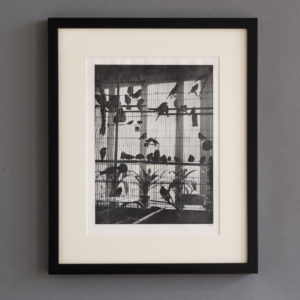
Photographs from Verve, December 1937. Brassaï
£250 eachPhotographs from Verve, December 1937. Brassaï
The Verve Review, from its very inception, was a purposefully luxurious art publication. It ran from 1937 to 1960, but for only 38 editions, due to the high degree of design and editorial work dedicated to each issue. Its editor was Stratis Eleftheriades, a Greek National who moved to Paris in the early thirties to take part in the growing Modernist movement, writing under the name of Teriade. As an art critic, patron and gallery owner he commissioned various individuals, artists, photographers and philosophers to contribute to it. Héliogravure is a process for printing photographs that was developed in the first half of the 19th century. It is a photo-mechanical process whereby a copper plate is grained and then coated with a light-sensitive gelatin tissue which had been exposed to a film positive, and then etched, resulting in a high-quality intaglio plate that can reproduce detailed continuous tones of a photograph.£250 each -
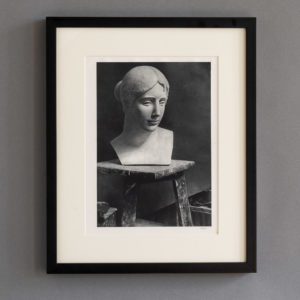
Photographs from Verve, December 1937. Brassaï
£250 eachPhotographs from Verve, December 1937. Brassaï
The Verve Review, from its very inception, was a purposefully luxurious art publication. It ran from 1937 to 1960, but for only 38 editions, due to the high degree of design and editorial work dedicated to each issue. Its editor was Stratis Eleftheriades, a Greek National who moved to Paris in the early thirties to take part in the growing Modernist movement, writing under the name of Teriade. As an art critic, patron and gallery owner he commissioned various individuals, artists, photographers and philosophers to contribute to it. Héliogravure is a process for printing photographs that was developed in the first half of the 19th century. It is a photo-mechanical process whereby a copper plate is grained and then coated with a light-sensitive gelatin tissue which had been exposed to a film positive, and then etched, resulting in a high-quality intaglio plate that can reproduce detailed continuous tones of a photograph.£250 each -
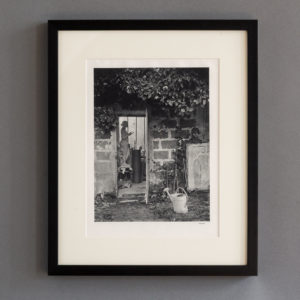
Photographs from Verve, December 1937. Brassaï
£250 eachPhotographs from Verve, December 1937. Brassaï
The Verve Review, from its very inception, was a purposefully luxurious art publication. It ran from 1937 to 1960, but for only 38 editions, due to the high degree of design and editorial work dedicated to each issue. Its editor was Stratis Eleftheriades, a Greek National who moved to Paris in the early thirties to take part in the growing Modernist movement, writing under the name of Teriade. As an art critic, patron and gallery owner he commissioned various individuals, artists, photographers and philosophers to contribute to it. Héliogravure is a process for printing photographs that was developed in the first half of the 19th century. It is a photo-mechanical process whereby a copper plate is grained and then coated with a light-sensitive gelatin tissue which had been exposed to a film positive, and then etched, resulting in a high-quality intaglio plate that can reproduce detailed continuous tones of a photograph.£250 each -
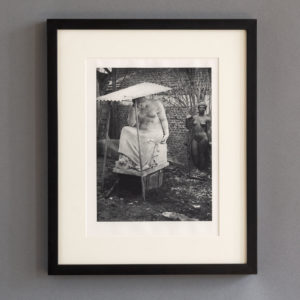
Photographs from Verve, December 1937. Brassaï
£250 eachPhotographs from Verve, December 1937. Brassaï
The Verve Review, from its very inception, was a purposefully luxurious art publication. It ran from 1937 to 1960, but for only 38 editions, due to the high degree of design and editorial work dedicated to each issue. Its editor was Stratis Eleftheriades, a Greek National who moved to Paris in the early thirties to take part in the growing Modernist movement, writing under the name of Teriade. As an art critic, patron and gallery owner he commissioned various individuals, artists, photographers and philosophers to contribute to it. Héliogravure is a process for printing photographs that was developed in the first half of the 19th century. It is a photo-mechanical process whereby a copper plate is grained and then coated with a light-sensitive gelatin tissue which had been exposed to a film positive, and then etched, resulting in a high-quality intaglio plate that can reproduce detailed continuous tones of a photograph.£250 each -
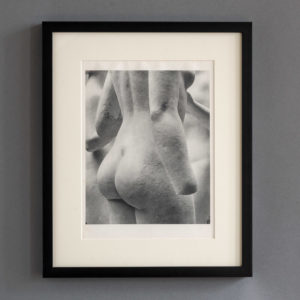
Photographs from Verve, December 1937. Brassaï
£250 eachPhotographs from Verve, December 1937. Brassaï
The Verve Review, from its very inception, was a purposefully luxurious art publication. It ran from 1937 to 1960, but for only 38 editions, due to the high degree of design and editorial work dedicated to each issue. Its editor was Stratis Eleftheriades, a Greek National who moved to Paris in the early thirties to take part in the growing Modernist movement, writing under the name of Teriade. As an art critic, patron and gallery owner he commissioned various individuals, artists, photographers and philosophers to contribute to it. Héliogravure is a process for printing photographs that was developed in the first half of the 19th century. It is a photo-mechanical process whereby a copper plate is grained and then coated with a light-sensitive gelatin tissue which had been exposed to a film positive, and then etched, resulting in a high-quality intaglio plate that can reproduce detailed continuous tones of a photograph.£250 each -

Photographs from Verve, December 1937. Brassaï
£250 eachPhotographs from Verve, December 1937. Brassaï
The Verve Review, from its very inception, was a purposefully luxurious art publication. It ran from 1937 to 1960, but for only 38 editions, due to the high degree of design and editorial work dedicated to each issue. Its editor was Stratis Eleftheriades, a Greek National who moved to Paris in the early thirties to take part in the growing Modernist movement, writing under the name of Teriade. As an art critic, patron and gallery owner he commissioned various individuals, artists, photographers and philosophers to contribute to it. Héliogravure is a process for printing photographs that was developed in the first half of the 19th century. It is a photo-mechanical process whereby a copper plate is grained and then coated with a light-sensitive gelatin tissue which had been exposed to a film positive, and then etched, resulting in a high-quality intaglio plate that can reproduce detailed continuous tones of a photograph.£250 each -
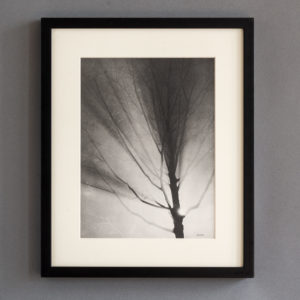
Photographs from Verve, December 1937. Brassaï
£250 eachPhotographs from Verve, December 1937. Brassaï
The Verve Review, from its very inception, was a purposefully luxurious art publication. It ran from 1937 to 1960, but for only 38 editions, due to the high degree of design and editorial work dedicated to each issue. Its editor was Stratis Eleftheriades, a Greek National who moved to Paris in the early thirties to take part in the growing Modernist movement, writing under the name of Teriade. As an art critic, patron and gallery owner he commissioned various individuals, artists, photographers and philosophers to contribute to it. Héliogravure is a process for printing photographs that was developed in the first half of the 19th century. It is a photo-mechanical process whereby a copper plate is grained and then coated with a light-sensitive gelatin tissue which had been exposed to a film positive, and then etched, resulting in a high-quality intaglio plate that can reproduce detailed continuous tones of a photograph.£250 each -
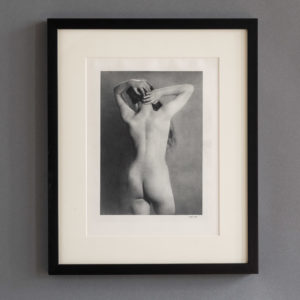
Photographs from Verve, December 1937. Man Ray
£250 eachPhotographs from Verve, December 1937. Man Ray
The Verve Review, from its very inception, was a purposefully luxurious art publication. It ran from 1937 to 1960, but for only 38 editions, due to the high degree of design and editorial work dedicated to each issue. Its editor was Stratis Eleftheriades, a Greek National who moved to Paris in the early thirties to take part in the growing Modernist movement, writing under the name of Teriade. As an art critic, patron and gallery owner he commissioned various individuals, artists, photographers and philosophers to contribute to it. Héliogravure is a process for printing photographs that was developed in the first half of the 19th century. It is a photo-mechanical process whereby a copper plate is grained and then coated with a light-sensitive gelatin tissue which had been exposed to a film positive, and then etched, resulting in a high-quality intaglio plate that can reproduce detailed continuous tones of a photograph.£250 each -
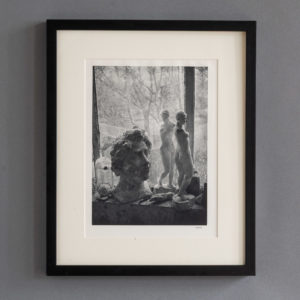
Photographs from Verve, December 1937. Brassaï
£250 eachPhotographs from Verve, December 1937. Brassaï
The Verve Review, from its very inception, was a purposefully luxurious art publication. It ran from 1937 to 1960, but for only 38 editions, due to the high degree of design and editorial work dedicated to each issue. Its editor was Stratis Eleftheriades, a Greek National who moved to Paris in the early thirties to take part in the growing Modernist movement, writing under the name of Teriade. As an art critic, patron and gallery owner he commissioned various individuals, artists, photographers and philosophers to contribute to it. Héliogravure is a process for printing photographs that was developed in the first half of the 19th century. It is a photo-mechanical process whereby a copper plate is grained and then coated with a light-sensitive gelatin tissue which had been exposed to a film positive, and then etched, resulting in a high-quality intaglio plate that can reproduce detailed continuous tones of a photograph.£250 each -
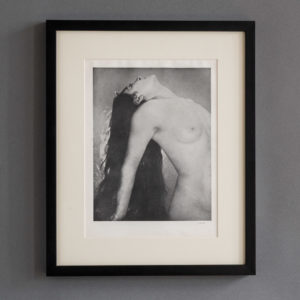
Photographs from Verve, December 1937. Man Ray
£250 eachPhotographs from Verve, December 1937. Man Ray
The Verve Review, from its very inception, was a purposefully luxurious art publication. It ran from 1937 to 1960, but for only 38 editions, due to the high degree of design and editorial work dedicated to each issue. Its editor was Stratis Eleftheriades, a Greek National who moved to Paris in the early thirties to take part in the growing Modernist movement, writing under the name of Teriade. As an art critic, patron and gallery owner he commissioned various individuals, artists, photographers and philosophers to contribute to it. Héliogravure is a process for printing photographs that was developed in the first half of the 19th century. It is a photo-mechanical process whereby a copper plate is grained and then coated with a light-sensitive gelatin tissue which had been exposed to a film positive, and then etched, resulting in a high-quality intaglio plate that can reproduce detailed continuous tones of a photograph.£250 each -
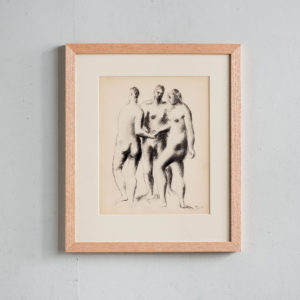
Picasso, lithographs,
£220Picasso, lithographs,
Produced for 'Editions des Chroniques du Jour' an important early work on Picasso.£220 -
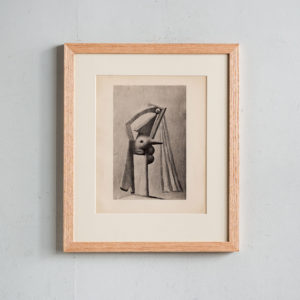
Picasso, lithographs,
£220Picasso, lithographs,
Produced for 'Editions des Chroniques du Jour' an important early work on Picasso.£220 -
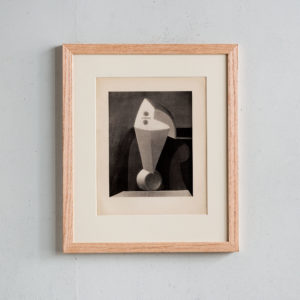
Picasso, lithographs
£220Picasso, lithographs
Produced for 'Editions des Chroniques du Jour' an important early work on Picasso.£220 -
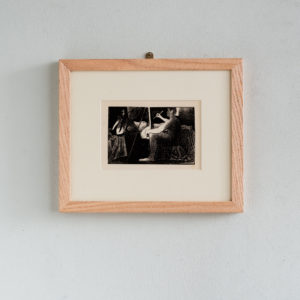
Picasso, lithographs from 1930
£195Picasso, lithographs from 1930
Produced for 'Editions des Chroniques du Jour' an important early work on Picasso.£195 -
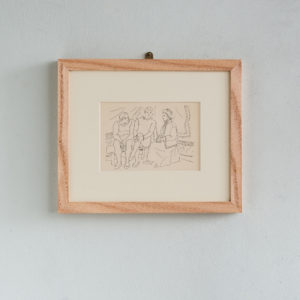
Picasso, lithographs from 1930
£195Picasso, lithographs from 1930
Produced for 'Editions des Chroniques du Jour' an important early work on Picasso.£195 -

Picasso, lithographs from 1930
£195Picasso, lithographs from 1930
Produced for 'Editions des Chroniques du Jour' an important early work on Picasso.£195 -
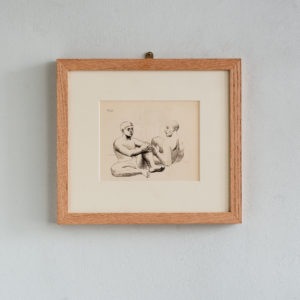
Picasso, lithographs from 1930
£195Picasso, lithographs from 1930
Produced for 'Editions des Chroniques du Jour' an important early work on Picasso.£195 -
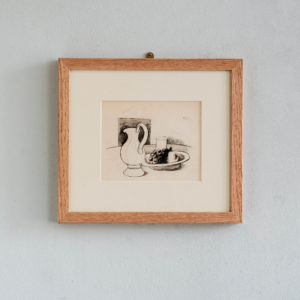
Picasso, lithographs from 1930
£195Picasso, lithographs from 1930
Produced for 'Editions des Chroniques du Jour' an important early work on Picasso.£195 -
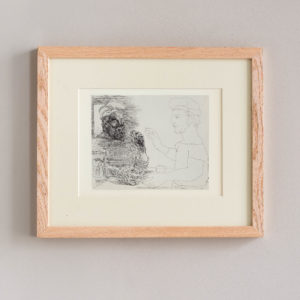
Picasso, Vollard Suite, 1956. c. May 1933.
£175 eachPicasso, Vollard Suite, 1956. c. May 1933.
Lithographs, published 1956 based on Picasso's work, produced from 1930-1937 for the art dealer Ambroise Vollard. Framed in plain oak with cream mounts. c. May 1933. Two Catalan Men£175 each -
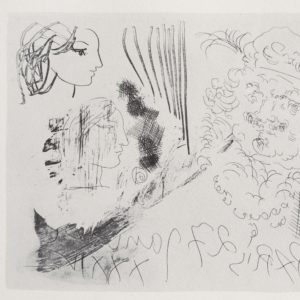
Picasso, Vollard Suite, 1956. Paris, January 27, 1934.
£175 eachPicasso, Vollard Suite, 1956. Paris, January 27, 1934.
Lithographs, published 1956 based on Picasso's work, produced from 1930-1937 for the art dealer Ambroise Vollard. Framed in plain oak with cream mounts. Paris, January 27, 1934. Head of Rembrandt and Heads of Three Girls£175 each -
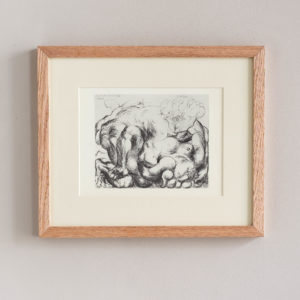
Picasso, Vollard Suite, 1956. Boisgeloup, April 23, 1933.
£175 eachPicasso, Vollard Suite, 1956. Boisgeloup, April 23, 1933.
Lithographs, published 1956 based on Picasso's work, produced from 1930-1937 for the art dealer Ambroise Vollard. Framed in plain oak with cream mounts. Boisgeloup, April 23, 1933. Embrace£175 each -
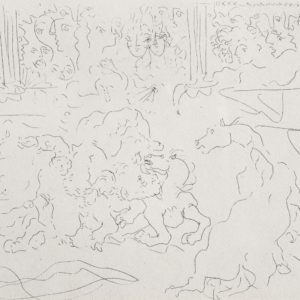
Picasso, Vollard Suite, 1956. Paris, November 7, 1933.
£175 eachPicasso, Vollard Suite, 1956. Paris, November 7, 1933.
Lithographs, published 1956 based on Picasso's work, produced from 1930-1937 for the art dealer Ambroise Vollard. Framed in plain oak with cream mounts. Paris, November 7, 1933. Bullfight I£175 each -
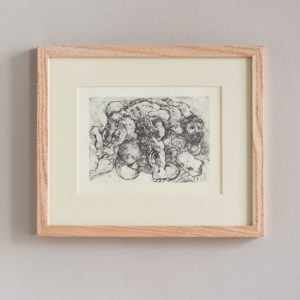
Picasso, Vollard Suite, 1956. Paris, November 2, 1933.
£175 eachPicasso, Vollard Suite, 1956. Paris, November 2, 1933.
Lithographs, published 1956 based on Picasso's work, produced from 1930-1937 for the art dealer Ambroise Vollard. Framed in plain oak with cream mounts. Paris, November 2, 1933. Embrace£175 each -
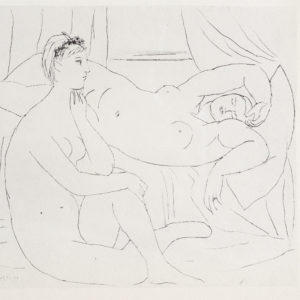
Picasso, Vollard Suite, 1956.
£175 eachPicasso, Vollard Suite, 1956.
Lithographs, published 1956 based on Picasso's work, produced from 1930-1937 for the art dealer Ambroise Vollard. Framed in plain oak with cream mounts. 1931. Two Nudes Resting.£175 each -
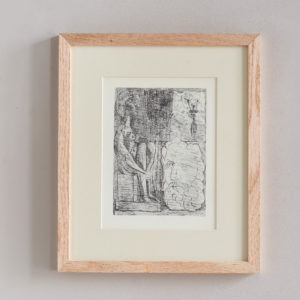
Picasso, Vollard Suite, 1956. Paris, May 5, 1933.
£175 eachPicasso, Vollard Suite, 1956. Paris, May 5, 1933.
Lithographs, published 1956 based on Picasso's work, produced from 1930-1937 for the art dealer Ambroise Vollard. Framed in plain oak with cream mounts. Paris, May 5, 1933. Sculpture of Seated Nude, Sculptured Head, and Vase of Flowers.£175 each -
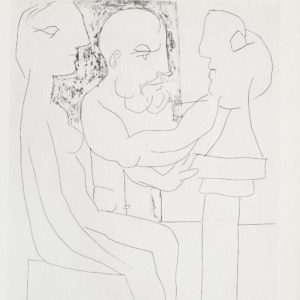
Picasso, Vollard Suite, 1956. Paris, March 25, 1933,
£175 eachPicasso, Vollard Suite, 1956. Paris, March 25, 1933,
Lithographs, published 1956 based on Picasso's work, produced from 1930-1937 for the art dealer Ambroise Vollard. Framed in plain oak with cream mounts. Paris, March 25, 1933. Sculptor Working from a Model.£175 each -
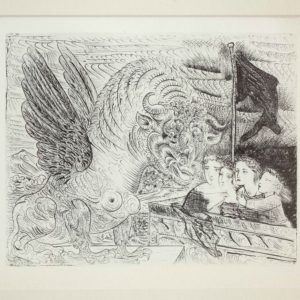
Picasso, Vollard Suite, 1956. c. May 1933.
£175 eachPicasso, Vollard Suite, 1956. c. May 1933.
Lithographs, published 1956 based on Picasso's work, produced from 1930-1937 for the art dealer Ambroise Vollard. Framed in plain oak with cream mounts. c. May 1933. Four Children Viewing a Monster.£175 each -
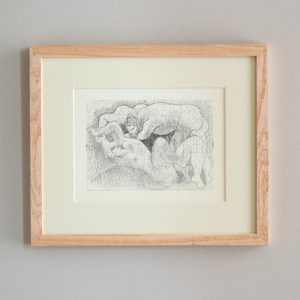
Picasso, Vollard Suite, 1956.
£175 eachPicasso, Vollard Suite, 1956.
Lithographs, published 1956 based on Picasso's work, produced from 1930-1937 for the art dealer Ambroise Vollard. Framed in plain oak with cream mounts. 1931. The Rape£175 each -
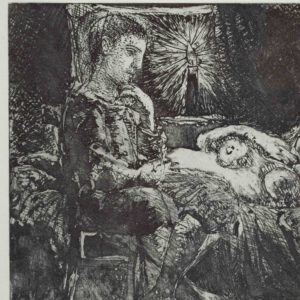
Picasso, Vollard Suite, 1956. c. 1935.
£175 eachPicasso, Vollard Suite, 1956. c. 1935.
Lithographs, published 1956 based on Picasso's work, produced from 1930-1937 for the art dealer Ambroise Vollard. Framed in plain oak with cream mounts. c. 1935. Boy Watching over Sleeping Woman by Candlelight.£175 each -
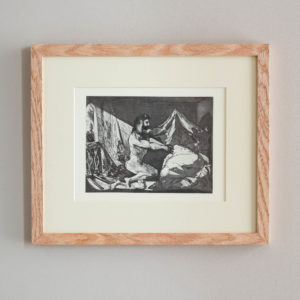
Picasso, Vollard Suite, 1956. June 12, 1936.
£175 eachPicasso, Vollard Suite, 1956. June 12, 1936.
Lithographs, published 1956 based on Picasso's work, produced from 1930-1937 for the art dealer Ambroise Vollard. Framed in plain oak with cream mounts. June 12, 1936. Satyr and Sleeping Woman.£175 each -
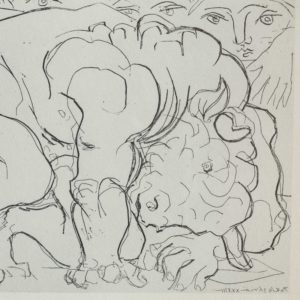
Picasso, Vollard Suite, 1956. Paris, May 26, 1933.
£175 eachPicasso, Vollard Suite, 1956. Paris, May 26, 1933.
Lithographs, published 1956 based on Picasso's work, produced from 1930-1937 for the art dealer Ambroise Vollard. Framed in plain oak with cream mounts. Paris, May 26, 1933. Dying Minotaur.£175 each -
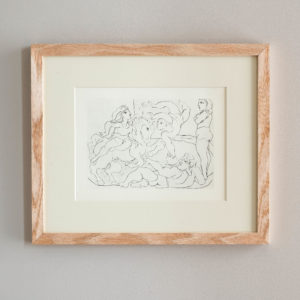
Picasso, Vollard Suite, 1956. Paris, November 11, 1933.
£175 eachPicasso, Vollard Suite, 1956. Paris, November 11, 1933.
Lithographs, published 1956 based on Picasso's work, produced from 1930-1937 for the art dealer Ambroise Vollard. Framed in plain oak with cream mounts. Paris, November 11, 1933. Acrobats with a Horse.£175 each -
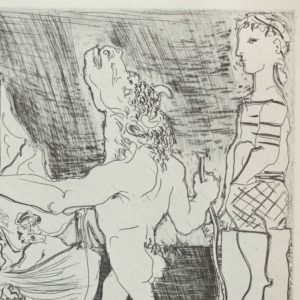
Picasso, Vollard Suite, 1956. Paris, October 23, 1934.
£175 eachPicasso, Vollard Suite, 1956. Paris, October 23, 1934.
Lithographs, published 1956 based on Picasso's work, produced from 1930-1937 for the art dealer Ambroise Vollard. Framed in plain oak with cream mounts. Paris, October 23, 1934. Blind Minotaur Led through the Night by Girl with Dove.£175 each -

Picasso, Vollard Suite, 1956. c. 1935.
£175 eachPicasso, Vollard Suite, 1956. c. 1935.
Lithographs, published 1956 based on Picasso's work, produced from 1930-1937 for the art dealer Ambroise Vollard. Framed in plain oak with cream mounts. c, 1935. Blind Minotaur Led through the Night by Girl with Fluttering Dove.£175 each -
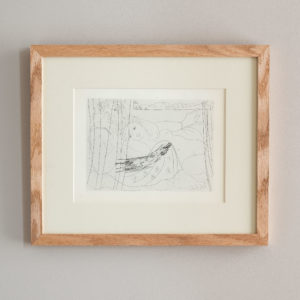
Picasso, Vollard Suite, 1956. Paris, June 16, 1933
£175 eachPicasso, Vollard Suite, 1956. Paris, June 16, 1933
Lithographs, published 1956 based on Picasso's work, produced from 1930-1937 for the art dealer Ambroise Vollard. Framed in plain oak with cream mounts. Paris, June 16, 1933. Minotaur with Girl in His Arms£175 each -
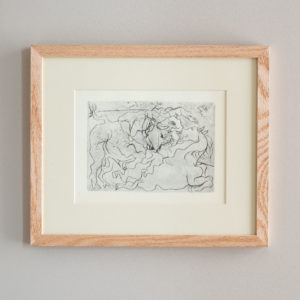
Picasso, Vollard Suite, 1956. Paris, November 8, 1933.
£175 eachPicasso, Vollard Suite, 1956. Paris, November 8, 1933.
Lithographs, published 1956 based on Picasso's work, produced from 1930-1937 for the art dealer Ambroise Vollard. Framed in plain oak with cream mounts. Paris, November 8, 1933. Bullfight II£175 each -
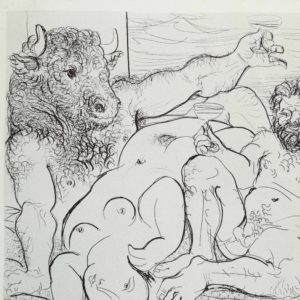
Picasso, Vollard Suite, 1956. Paris, May 18, 1933.
£175 eachPicasso, Vollard Suite, 1956. Paris, May 18, 1933.
Lithographs, published 1956 based on Picasso's work, produced from 1930-1937 for the art dealer Ambroise Vollard. Framed in plain oak with cream mounts. Paris, May 18, 1933. Drinking Minotaur and Sculptor with Two Models£175 each -
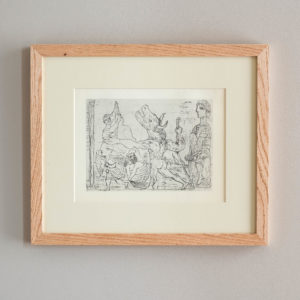
Picasso, Vollard Suite, 1956. c. October 1934.
£175 eachPicasso, Vollard Suite, 1956. c. October 1934.
Lithographs, published 1956 based on Picasso's work, produced from 1930-1937 for the art dealer Ambroise Vollard. Framed in plain oak with cream mounts. c. October 1934. Blind Minotaur Led by Girl with Fluttering Dove.£175 each -
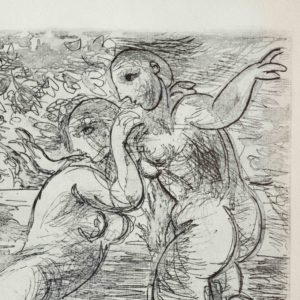
Picasso, Vollard Suite, 1956. Paris, May 22, 1933.
£175 eachPicasso, Vollard Suite, 1956. Paris, May 22, 1933.
Lithographs, published 1956 based on Picasso's work, produced from 1930-1937 for the art dealer Ambroise Vollard. Framed in plain oak with cream mounts. Paris, May 22, 1933. Two Nudes Bathing. At left, Sculptured Head and Head of Spectator.£175 each -
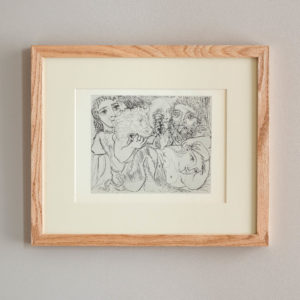
Picasso, Vollard Suite, 1956. Boisgeloup, June 18, 1933.
£175 eachPicasso, Vollard Suite, 1956. Boisgeloup, June 18, 1933.
Lithographs, published 1956 based on Picasso's work, produced from 1930-1937 for the art dealer Ambroise Vollard. Framed in plain oak with cream mounts. Boisgeloup, June 18, 1933. Minotaur, Drinking Sculptor, and Three Models.£175 each -
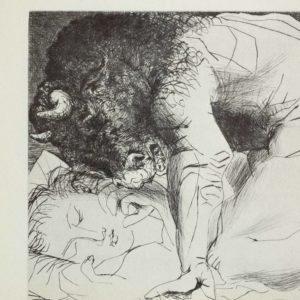
Picasso, Vollard Suite, 1956. Boisgeloup, June 18, 1933.
£175 eachPicasso, Vollard Suite, 1956. Boisgeloup, June 18, 1933.
Lithographs, published 1956 based on Picasso's work, produced from 1930-1937 for the art dealer Ambroise Vollard. Framed in plain oak with cream mounts. Boisgeloup, June 18, 1933. Minotaur over Sleeping Girl.£175 each -
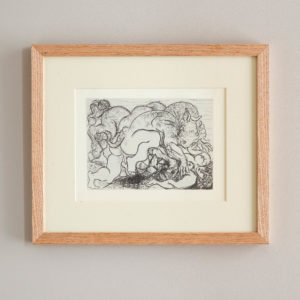
Picasso, Vollard Suite, 1956. Paris, May 23, 1933.
£175 eachPicasso, Vollard Suite, 1956. Paris, May 23, 1933.
Lithographs, published 1956 based on Picasso's work, produced from 1930-1937 for the art dealer Ambroise Vollard. Framed in plain oak with cream mounts. Paris, May 23, 1933. Minotaur Assaulting a Girl.£175 each -
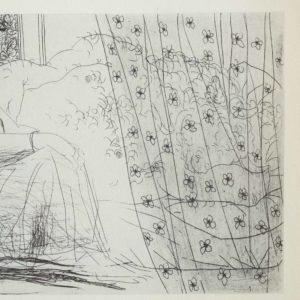
Picasso, Vollard Suite, 1956. Paris, May 18, 1933.
£175 eachPicasso, Vollard Suite, 1956. Paris, May 18, 1933.
Lithographs, published 1956 based on Picasso's work, produced from 1930-1937 for the art dealer Ambroise Vollard. Framed in plain oak with cream mounts. Paris, May 18, 1933. Girl Seated by Sleeping Minotaur.£175 each -
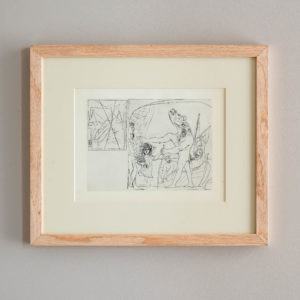
Picasso, Vollard Suite, 1956. Boisgeloup. September 22, 1934.
£175 eachPicasso, Vollard Suite, 1956. Boisgeloup. September 22, 1934.
Lithographs, published 1956 based on Picasso's work, produced from 1930-1937 for the art dealer Ambroise Vollard. Framed in plain oak with cream mounts. Boisegeloup. September 22, 1934. Blind Minotaur Led by Girl with Bouquet of Wild Flowers.£175 each -
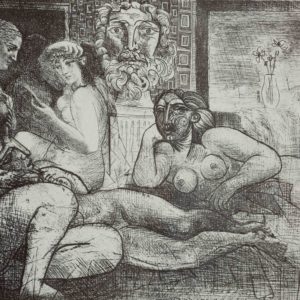
Picasso, Vollard Suite, 1956. Paris, March 10, 1934
£175 eachPicasso, Vollard Suite, 1956. Paris, March 10, 1934
Lithographs, published 1956 based on Picasso's work, produced from 1930-1937 for the art dealer Ambroise Vollard. Framed in plain oak with cream mounts. Paris, March 10, 1934. Four Models and a Sculptured Head.£175 each -

Picasso, Vollard Suite, 1956. Paris, March 2, 1934
£175 eachPicasso, Vollard Suite, 1956. Paris, March 2, 1934
Lithographs, published 1956 based on Picasso's work, produced from 1930-1937 for the art dealer Ambroise Vollard. Framed in plain oak with cream mounts. Paris, March 2, 1934. Sculptor and Statue of Three Female Dancers£175 each -
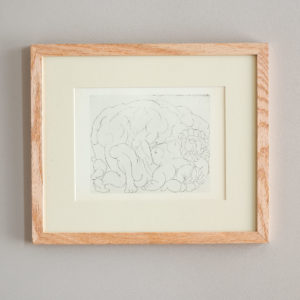
Picasso, Vollard Suite, 1956. Boisgeloup, April 22, 1933.
£175 eachPicasso, Vollard Suite, 1956. Boisgeloup, April 22, 1933.
Lithographs, published 1956 based on Picasso's work, produced from 1930-1937 for the art dealer Ambroise Vollard. Framed in plain oak with cream mounts. Boisegeloup, April 22, 1933. Embrace.£175 each -
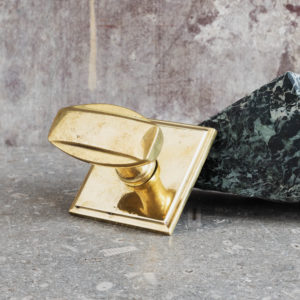
Brass Art Deco centre pull
£150 -
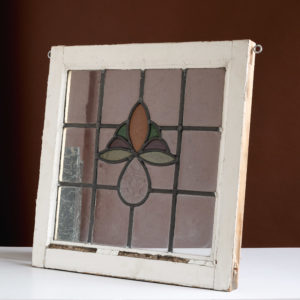
Stained glass panel,
£30 -
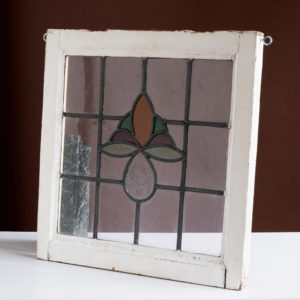
Stained glass panel,
£30 -
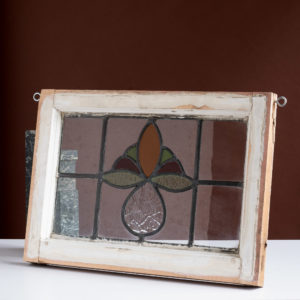
Stained glass panel,
£30 -
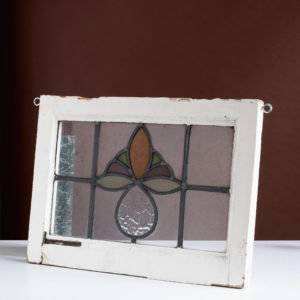
Stained glass panel,
£30 -
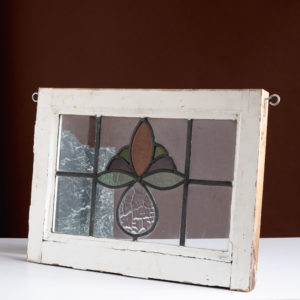
Stained glass panel,
£30 -

Stained glass panel,
£30 -
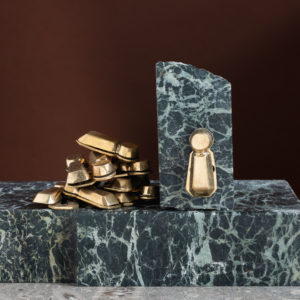
Art Deco escutcheons
£30 each -
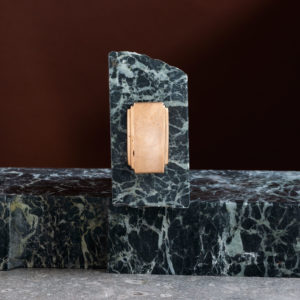
Bronze Art Deco escutcheon
£30
Featured Items
-
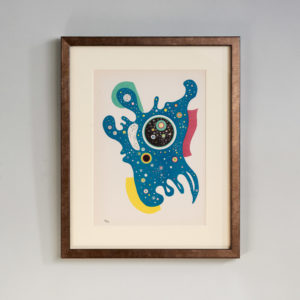
Stars by Wassily Kandinsky, Verve Vol. 1 / No. 2.
£800Stars by Wassily Kandinsky, Verve Vol. 1 / No. 2.
The Verve Review was a purposefully luxurious. It ran from 1937 to 1960, but with only 38 editions available, due to the high degree of design and editorial work dedicated to each issue. Each edition contained unique lithographic prints, commissioned by the editor, and each cover a double-page lithograph elaborated by one of the artists contained within. It was the brainchild of its editor Stratis Eleftheriades, a Greek National who moved to Paris in the early thirties to take part in the growing Modernist movement, writing under the name of Teriade.£800 -
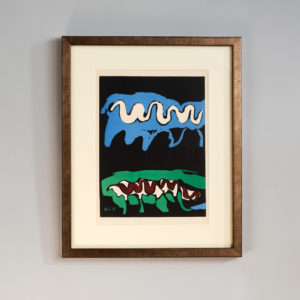
The Four Elements, Earth by Francisco Bores, Verve Vol. 1 / No. 1.
£600The Four Elements, Earth by Francisco Bores, Verve Vol. 1 / No. 1.
The Verve Review was a purposefully luxurious. It ran from 1937 to 1960, but with only 38 editions available, due to the high degree of design and editorial work dedicated to each issue. Each edition contained unique lithographic prints, commissioned by the editor, and each cover a double-page lithograph elaborated by one of the artists contained within. It was the brainchild of its editor Stratis Eleftheriades, a Greek National who moved to Paris in the early thirties to take part in the growing Modernist movement, writing under the name of Teriade.£600 -

The Dance, by Henri Matisse, Jan – March 1939 / No. 4.
£1,200The Dance, by Henri Matisse, Jan – March 1939 / No. 4.
The Verve Review was a purposefully luxurious. It ran from 1937 to 1960, but with only 38 editions available, due to the high degree of design and editorial work dedicated to each issue. Each edition contained unique lithographic prints, commissioned by the editor, and each cover a double-page lithograph elaborated by one of the artists contained within. It was the brainchild of its editor Stratis Eleftheriades, a Greek National who moved to Paris in the early thirties to take part in the growing Modernist movement, writing under the name of Teriade.£1,200 -

Autumn by Abraham Rattner, Verve Vol. 1 / No. 3.
£600Autumn by Abraham Rattner, Verve Vol. 1 / No. 3.
The Verve Review was a purposefully luxurious. It ran from 1937 to 1960, but with only 38 editions available, due to the high degree of design and editorial work dedicated to each issue. Each edition contained unique lithographic prints, commissioned by the editor, and each cover a double-page lithograph elaborated by one of the artists contained within. It was the brainchild of its editor Stratis Eleftheriades, a Greek National who moved to Paris in the early thirties to take part in the growing Modernist movement, writing under the name of Teriade.£600

